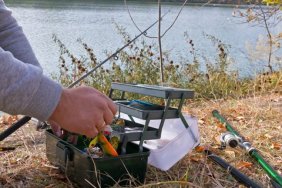 With winter forcing many anglers to store their tackle for several months, now is the best time to survey your gear. Throw out tattered plastic baits, clean and oil your reels, and replace vital terminal tackle like split rings, or more importantly: hooks. Your hooks are the one point of contact between you and the fish, and they have the crucial job of keeping a fish on the line from strike to livewell. Today, I’ve provided you with some tips on hook maintenance that will help you become better prepared for the spring.
With winter forcing many anglers to store their tackle for several months, now is the best time to survey your gear. Throw out tattered plastic baits, clean and oil your reels, and replace vital terminal tackle like split rings, or more importantly: hooks. Your hooks are the one point of contact between you and the fish, and they have the crucial job of keeping a fish on the line from strike to livewell. Today, I’ve provided you with some tips on hook maintenance that will help you become better prepared for the spring.
When I go fishing, I always want to make sure that my hooks are as sharp as possible. For some anglers, this means using a tool to sharpen the tips of the hooks in place. There are small, inexpensive hand files that can be used to sharpen hooks, as well as electronic options, such as Berkley’s Pocket Hook Sharpener. This is a popular option with expensive lures and expensive hooks, as anglers won’t want to throw away high quality hooks unless they absolutely need to.
Sometimes, however, it’s time to simply replace old hooks with new ones. Products from companies like Owner, Eagle Claw, Gamakatsu, or Trokar are great options, and many anglers simply replace lure hooks right away in favor of them. It’s smart to inspect your hooks each season, just to check for any stress or weak points, and replace any that aren’t up to par.
For further protection for your hooks, especially during storage, hook guards/bonnets are a great idea. These plastic or rubber products fit snugly over your hooks and protect them from unnecessary wear and tear while protecting your fingers and clothes from sharp points.
Each year, many anglers lose big fish because of dull or weak hooks. Don’t count yourself as one of them this season. Take some time this winter to give your own hooks a once over, and replace or sharpen any that need further attention. Make sure your hooks are always sharp and strong, and you’ll see a noticeable increase in fish brought to the boat.








